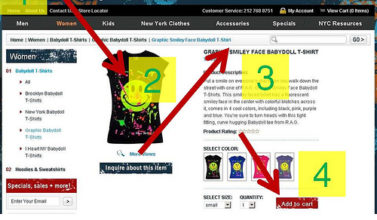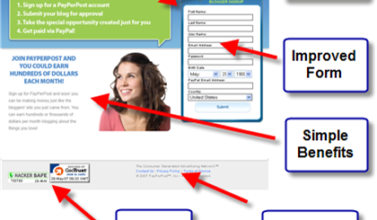
So you’ve written your first few blogs and your website is up and running but now comes the tricky part. That’s right, it all comes down to driving traffic to your site and online content with search engine optimisation (SEO).
While SEO is not rocket science, it does require some planning, research and understanding. If you don’t apply proper SEO strategies to make your site ‘findable’ (indexable), nobody will even know that you exist. In this article, we take a closer look at some SEO terminology and how to implement it.
What Is Search Engine Optimisation?
For those who have some experience in digital marketing, SEO may seem self-explanatory. However, for those who don’t, SEO is the process of optimising your website content to improve search engine rankings. This means, the better you optimise your online content, the higher you will appear when people search for businesses like yours. While most focus is on Google, it also applies to other search engines including Bing, Yahoo and DuckDuckGo among others.
Must Read Article: ‘Need Help Writing An SEO-friendly Blog Post?’
On-Page SEO
On-page SEO refers to the changes you make directly to your web page to make it search engine friendly. It involves optimising the HTML code, content quality, and content structure. You essentially have direct control over on-page SEO where you can tweak things as required as long as you don’t worsen the user’s experience.
Search engines will rank your content according to predetermined criteria involving the following:
Quality And Relevancy Of Your Content
Creating high-quality, engaging and relevant content will help encourage people to link to you and share your content across social media. Remember to keep your content fresh and relevant in terms of targeted keywords and also the time of month or year. This includes pictures, images, and videos on your website. You should ideally update your pages once a month but at the very least, do so every quarter.
A helpful piece of advice is to writing long-form content and cover multiple sub-topics within each article. The higher the quality, the more time people will spend reading it making them more likely to share it. In this regard, the time spent on your website and how often your content is shared will affect organic rankings.

Include A Compelling Title
Just like impactful advertising messages, good headings also attract visitors. You should write catchy headlines and add your primary SEO keyword for added benefit. Google generally displays the first 50-60 characters of a heading so we recommend keeping your headings under 60 characters.
Page Structure
While there may be the odd exception but for the most part, no-one likes reading tons of text. Break the monotony and add good quality, relevant images and make the content easy to scroll through. Include screenshots, graphs, illustrations, infographics or other forms of media.
Alt Text For Images
A vital element here is to describe each image using a proper title, description and “alt text” (alternative text). The ALT text enables search engines to find your image and it also ensures that the text appears when, for some reason, the image doesn’t load.
Header Tags
Be sure to add your primary keyword in H1 and H2 tags to fully benefit from organic SEO. It also helps to break up your content into smaller, more organised sections making it easier to read and understand.
Meta Description
Meta descriptions appear below the URL on a search engine results page. Although Meta descriptions don’t directly affect rankings, they do increase the likelihood that visitors will click on your listing over a competitor’s. As a result, better click-through rates and an increased amount of traffic from search engines.
Internal and External Links
A properly optimised page should contain a good number of internal and external links. Links pointing to your other articles or pages on the same site (domain) are referred to as internal links. Best SEO practice is to add at least 5-6 internal links in each article.
On the other end, we’ve got external links which point to other sites not part of your own domain. While it depends on the context and content of the article, you should add at least 2-3 external links.
Internal links are super important as they tend to keep visitors on your site while providing more relevant information. At the same time, the inclusion of external links allows them to understand more about the topic.
Link Structure
One thing to keep in mind is an organised URL structure. Not only is it better for search engines but it also provides better navigation for the user. Make sure that all your URL’s contain keywords and clearly reflect the web pages they point to. The most effective URL structure usually consists of only 2-4 words. This way, URL’s are easy to remember, simple to enter into the browser and optimised for search engines.
Website Performance (Speed and User Experience)
While quality content is vital, the performance of your web page and the customer experience are also ranking factors. Page load speed is essential for many visitors and search engines as a slow website is bad for SEO.
Fact is, it is unacceptable to have a slow load speed the advanced technology, design platforms and processing speed we have today. Did you know that potential customers often regard slow websites as untrustworthy? As many as 40% will abandon a website if it takes longer than 3 seconds to load.
The same applies if it doesn’t render properly on mobile devices as it affects the customer experience. Remove anything that’s slowing down your page, i.e. pop-ups, adverts, music players, flash graphics, large images and pointless plugins.
Off-Page SEO
Off-page SEO refers to everything taking place outside of your website; factors you don’t really have control over. The three we will cover include backlinks, domain authority and social signals.
Backlinks
Backlinks are regarded as one of the most important off-page SEO factors and for good reason. In fact, search engines see backlinks from trusted sites almost like an endorsement for your content. It’s simple really as you earn a backlink when another website or web page links to your website. By linking to your website, other users tell Google that your site is good and contains useful information.
While other websites might add backlinks to your site, this process is mostly out of your hands. However, writing good content is always a great place to start but here are a few other things you should consider:
- Ask people or big companies to include backlinks to your site
- Connect your Facebook page to your website
- Spend time guest blogging to specific industry-related websites
- Reach out to influencers and other bloggers
- Join review and directory sites
Social Signals
As briefly mentioned earlier, social sharing of content carries considerable weight in terms of SEO rankings. The more people share your content on social media and the better your engagement rate, the more positive Google will view your site. Be more active on social channels and grow a loyal follower base to increase your reach and engagement. Make it even easier for readers to share your content by adding social buttons on your site.
Domain Authority
Your domain authority is another off-page SEO factor that you don’t really have control over. Domain authority helps search engines determine how much they can trust you and that depends on the following:
- How long you’ve had your domain name (the longer the better)
- The history of the domain name (if it had a previous owner who did not comply with best practices, search engines will see that history and take that into account).
- The number of referring domains
- Search engines and organic traffic play a major role in your business growth. It is because the majority of your target audience uses a search engine to find you that implementing both on-page and off-page SEO will help more potential customers find you.
Interesting Article: ‘Learn How To Improve Your Website SEO’
The Importance Of Keywords
This involves search terms that visitors to your website is likely to enter into search engines when looking for information and websites like yours. The primary goal is to target keywords that could generate the most hits.
Short Keywords
Short keywords are usually 2-3 words and while these may have huge monthly search volumes, they are incredibly difficult to rank for. Remember, you are competing against big brands who would already be high on search engine results using these keywords for some time.
For beginners, we recommend steering clear of difficult keywords and to think outside the box. Be creative and think more along the lines of search intent rather than actual search terms. You could also look at using natural phrases or ‘natural language’ which relates to SEO for voice search.
Don’t forget LSI keywords as these refer to terms and phrases similar or related to the main keyword. While they work really well to help Google understand what a page is all about, don’t overdo it. Using your primary keyword too many times is called ‘keyword stuffing’ and a definite no.
Only use LSI keywords sparingly in your content to make it easier for search engines to recognise the topic. Here’s a nifty free tool called, LSIGraph that will show the most related terms and phrases you can use.
Long-tail Keywords
This one is quite self-explanatory as these keywords have more than 4-5 words. Long-tail keywords might have lesser search volume but they are considerably easier to rank. While some big brands may still appear on the first page of search results, they won’t likely be targeting exact long-tail keywords.
A top tip here would be to write a better article around the long-tail keyword and stand a chance to outrank the bigger brands. Using long-tail keywords as titles (H1) or at least subtitles (H2, H3, H4) in your blog articles is highly recommended. Always try to closely match your H1 tags to the logical answer Google and users are looking for. The closer the match, the higher you’ll rank in search engine results.
The main difference between a website with tons of organic traffic and one that gets none is in the keywords. The golden rule for SEO and implementing a keyword research strategy is to always think like your customer.
SEO Tools
There are many SEO tools that you could use to simplify and streamline the entire process. Our recommendations are:
- Yoast SEO plugin for WordPress
- SEMrush
- Ahrefs
- Google Trends
- AnswerTheRepublic
Stay ahead of the competition in today’s digitally savvy world with an attractive, SEO and mobile-friendly website. Get in touch with our team experts if you need assistance with web design, SEO, PPC, social media management or Marketing Automation.
Related Post
What’s the single...
Adam Vincenzini from Comms Corner recently posted a very good article which I think goes...
- January 25, 2011
- By Rob Thomas
- Blogging
Effective Facebook Marketing...
With over 600 million users, Facebook represents the single most connected platform on...
- March 1, 2011
- By Nadine Thomas
- Latest Online Trends
Monitor, Influence and Lead...
Get Actively Involved in the Outcome of Search Results Don’t take negative publicity...
- April 28, 2011
- By Rob Thomas
- ORM
Free Online Reputation...
Listen to What’s Being Said About You Online (Free online reputation monitoring...
- May 5, 2011
- By Rob Thomas
- ORM
Top Tips for Product Page...
As the internet evolves and user expectation becomes increasingly sophisticated, creating...
- May 31, 2011
- By Rob Thomas
- e-Commerce
How To Drive Sales With...
Landing pages have long been the primary tool of the web-savvy marketer. Whether the...
- June 12, 2011
- By Nadine Thomas
- e-Commerce











Leave a Comments